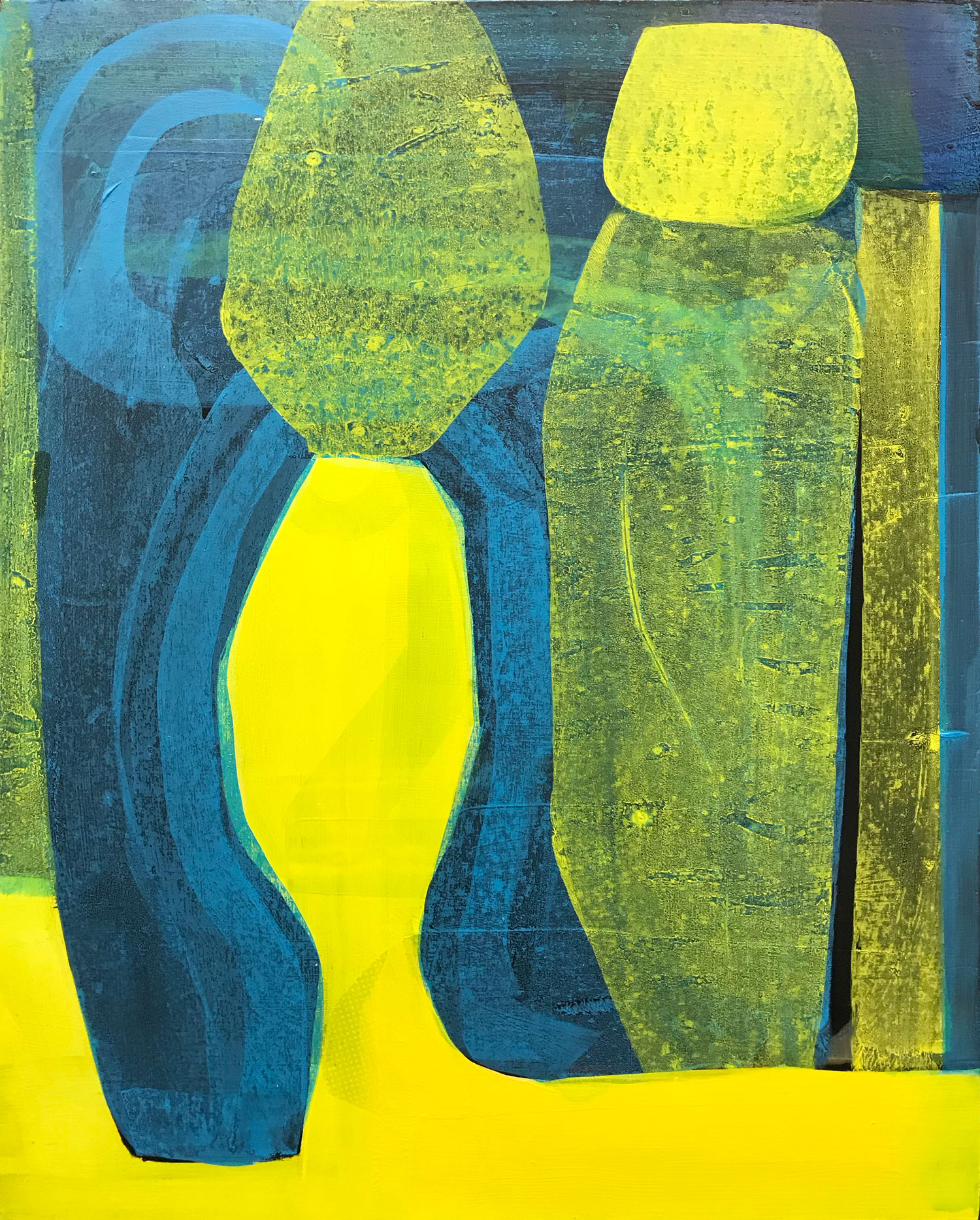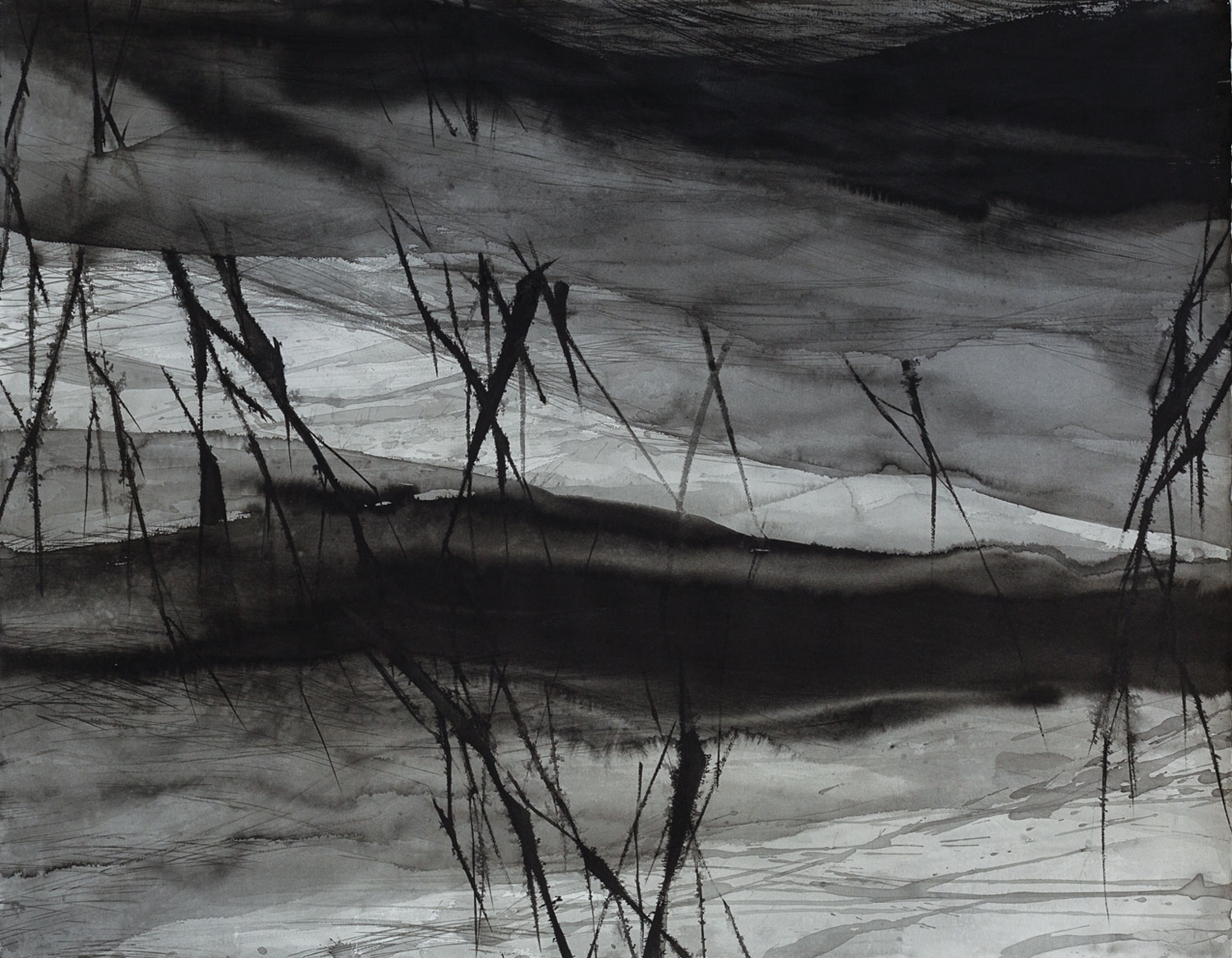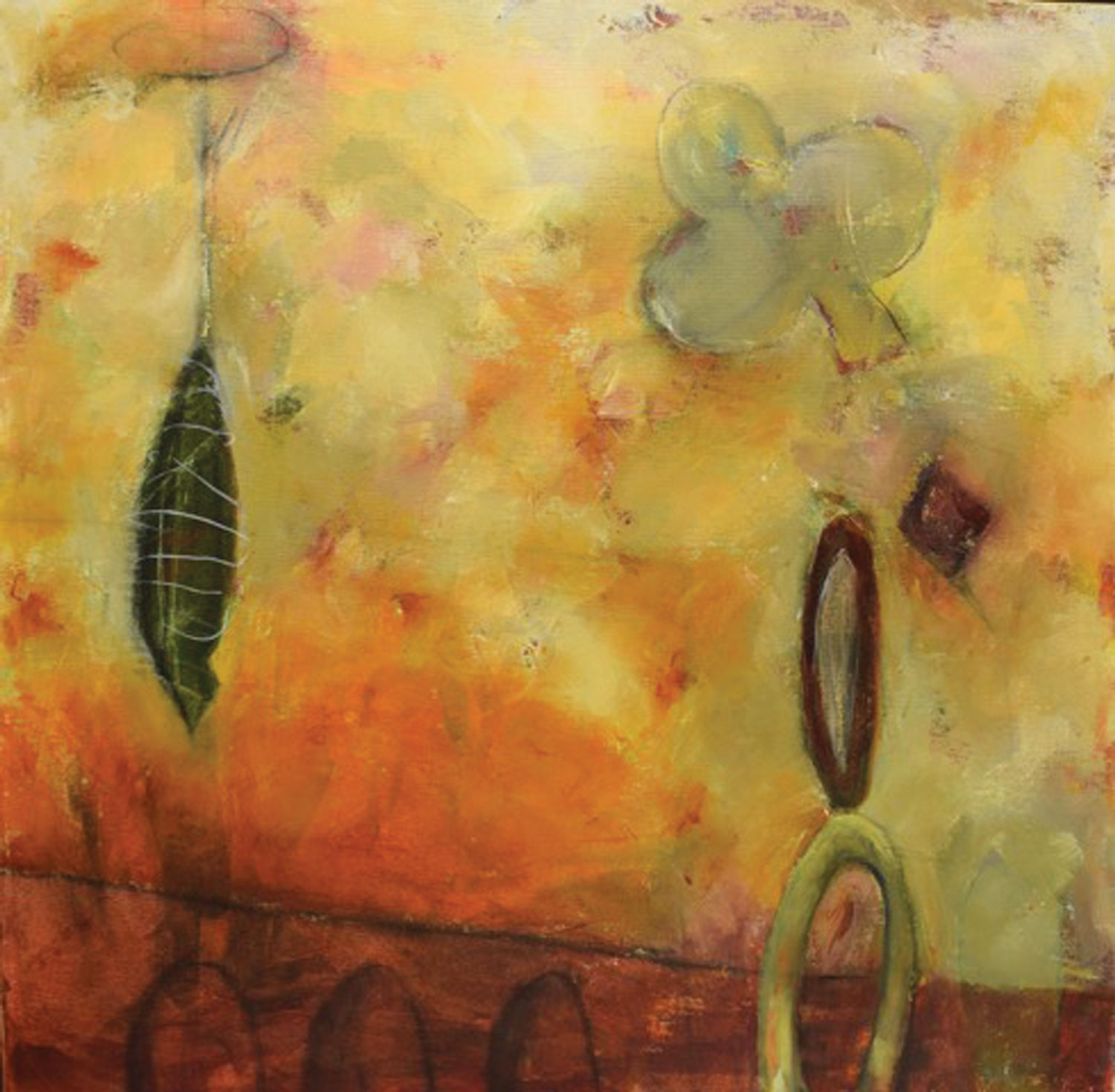When Marjorie Taylor made her first piece of vegan taxidermy she wasn’t sure what she’d done.
“I didn’t know if I was making art or just a glorified stuffed animal.”
She belongs to Out of the Woodwork, a guild of professional women artists. So she took her fabric animal head, which is what she had made, to one of their meetings.
They told her to keep going.
“That’s the nice thing about the group,” Taylor says. “The feedback.”
She adds, “You have to have faith in the creative process.”
A psychologist, Taylor previously studied the creative process, focusing on children who create imaginary friends. She is one of 14 artists showing in Conversations: Reflections of 14 Women Artists at Maude Kerns Art Center. As a psychology professor at the University of Oregon, she did research, was department head and taught for 30 years. When one of her students saw the work from her recent series, Vegan Taxidermy, she said it seemed Taylor had moved from researching imaginary friends to creating them herself.
Taylor has nine works in this group show, and I agree with her student: They do look like imaginary friends. Not the heads hung trophy style, but the freestanding sculptures. Those look like animals you might come across in an alternate fanciful reality, where a skunk’s tail or an olingo’s face could be designed with needlepoint.
The flowery embroidery lends a fantastic yet comforting element. Standing beside the fabric animals I overheard a group of women speaking about them. “I’d like to have these in my home,” one said.
Isn’t that about the best compliment an artist can hope for?
Taylor uses anatomically correct forms and glass eyes, real taxidermy supplies, to create her sculptures. She buys the needlepoint she repurposes in her art on eBay. People enjoy creating needlepoint, she says, but a person only needs so many needlepoint-covered pillows. So lots of old needlepoint fabrics are available online.
Taylor has long been interested in working with fabrics. Starting with art quilts, then embroidery and hooking a rug when the floor in her house needed covering. Rather than making a regular pattern — “I don’t do regular,” she says — she decorated the rug with MRI images of her husband Bill Harbaugh’s brain.
“People didn’t want to walk on the rug,” she says, and she wound up entering it in Eugene’s 2009 Mayor’s Art Show.
“Fabric MRI: Bill’s Brain” won Best of Show.
Both Taylor and her husband are interested in how the brain works and have collaborated with neuroscientists at the University of Oregon. Harbaugh is an economist who teaches at the UO, though he’s better known on- and off-campus as the editor of the muckraking blog UOMatters.com. He is interested in what motivates people towards altruism and refers to the practice of using brain imagery together with economics as “neuroeconomics.”
Taylor first began making art when she was still teaching, when advances in imaging technology in the late ’80s and ’90s led to great insights. Inspired by both the breakthroughs in research and by the beauty of the images, she began to make what some people — especially her husband — refer to as “Brain Art.” (See Harbaugh’s website “The Museum of Scientifically Accurate Fabric Brain Art” at NeuroScienceArt.com.)
When Taylor retired and, with her daughter Amber, opened the Velvet Edge Boutique, now located in the 5th Street Public Market, it opened a new chapter in her life — as a visual display artist. Designing the boutique’s windows, she went to town creating imaginative fashion designs.
Buying old playing cards online discarded by casinos, she repurposed the hearts to make a strapless gown with a fitted bodice for a Valentine’s Day display. In 2017 she submitted the piece she calls “Lady Luck” to the World of WearableArt, a competition in Wellington, New Zealand. WOW is an international multi-media event attended by more than 50,000 people, and Taylor landed as a finalist. Another of her wearable art pieces, “The Bee Whisperer,” won a finalist place in the 2018 WOW competition. The dress has been on display for the past year at the WOW Museum.
Swedish psychologist Annika Andersson, a UO graduate, heard about the fantastic bee dress — it incorporates a beekeeper’s headdress and large gold and black bees — and wanted to wear it to the Nobel Prize Banquet to attract attention to the bee crisis. Andersson’s husband helps to organize the prestigious award ceremony, and she regularly attends. Taylor suggested creating a more elegant looking dress for the occasion, which she constructed out of recycled bubble wrap, scientific papers and computer board parts. Andersson wore the finished piece, which from a distance looks like a “regular” gown, to the banquet.
The exhibition, the guild’s first show together, is dedicated to the late Beverly Soasey, a member of the guild who died in 2018.
She was a collage or assemblage artist who repurposed found objects and was inspired by antique photographs of people she didn’t know. Her work “Untitled” is described as a “stitched collage.”
It is based on an old black and white photograph of two small children. They stare straight at the camera, not exactly thrilled, and are bound together by thread stitched in a haphazard, gestural manner. The background is covered by a contrasting regular white stitching pattern. It is a striking image, as eerie and beautiful as a Diane Arbus photograph aided by the touch of a seamstress artist.
Taylor has in common with Soasey the practice of repurposing, but Conversations is a group show by women not united by any single approach, subject or medium. Their commonality is rooted in “the desire to support and encourage one another’s unique path and vision,” according to an artist statement at the exhibit.
The multiplicity of media and paths is beautifully caught in the show’s centerpiece, a long table set for a meal. The “Table Installation” reminds me of Judy Chicago’s landmark artwork “The Dinner Party” (1974-79), an ode to women artists. “The Dinner Party,” though, was entirely made by Chicago. At Maude Kerns Art Center each artist sets her own plate.
Out of the Woodwork members Dee Etzwiler, Hannah Goldrich, Jenny Gray, Heather Halpern, Ann Bumb Hamilton, Rogene Mañas, Rebecca Mannheimer, Tylar Merrill, Satoko Motouji, Sally Schwader, Sarah Sedwick, Beverly Soasey, Marijo Taylor and Marjorie Taylor have their plates full with the medium of their choice.
Gray, for example, paints in a style reminiscent of modern abstraction — though with a contemporary graphic feel. Titles of her paintings, such as “Transcend” and “Infinity,” speak to universal themes like those modernists were concerned with. Her plate is loaded with painting supplies: a large, used brush, a paint-stained rag, tubes of paint.
On the middle of the table is a centerpiece with a ribbon in it. On the ribbon are words that reflect the member’s conversations. The table is set for socializing as much as for nourishment, for “gathering” and “laughing” as well as “feedback” and “teaching.”
Taylor is one of the few in the guild who does not have formal art training. The group’s feedback is important to her.
“Is this art?” she asks.
It’s the same process all artists undertake when they put their work, as the saying goes, “out there.” Groups like Out of the Woodwork act as in-between places, between out there — the real world — and the imaginary one created by artists.
An artist talk about Conversations begins 1 pm Saturday, Feb. 1, at Maude Kerns Art Center, 1910 E. 15th Avenue.



